SD › Italy › Milan › Venice to Milan
Updated: May 1, 2022
By Santorini Dave
See Also
- How to Buy Train Tickets in Italy
- Milano Centrale Train Station Guide
- Getting Around Milan
- Where to Stay in Milan
- Where to Stay in Venice
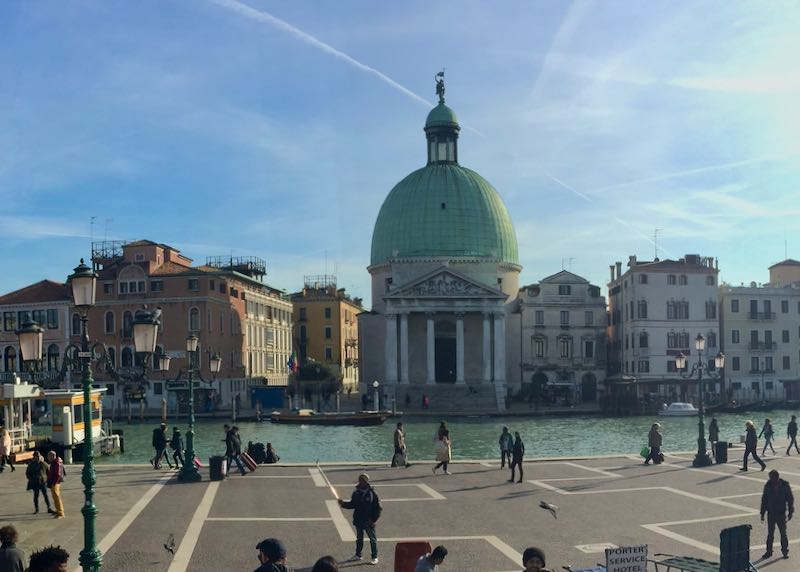
The church of San Simeone Piccolo sits directly across the Grand Canal from the Venice train station.
The 166-mile train line between Venice and Milan is one of Italy’s most frequently traveled routes. Over a hundred high-speed trains per day leave Venice bound for Milan, so booking a trip is relatively easy (though leaving Venice itself is never easy). Navigating the canals to get to the station on time can be tricky, so it’s a good idea to study up before you leave so you’ll know what to expect and your departure can be as stress-free as possible.
• Note: ItaliaRail.com is the best site for booking Italy train tickets online and in advance.
What to Know about the Venice Train Station
The central part of Venice is served by the Santa Lucia train station, named for the church and convent that once used the land. While it’s relatively small, it’s also quite busy – 30 million passengers pass through it every year. Trains reach the station via a bridge that crosses a short section of the Adriatic Sea. The building is aggressively modernist and thus looks nothing like the rest of Venice, which at least makes it easy to find.
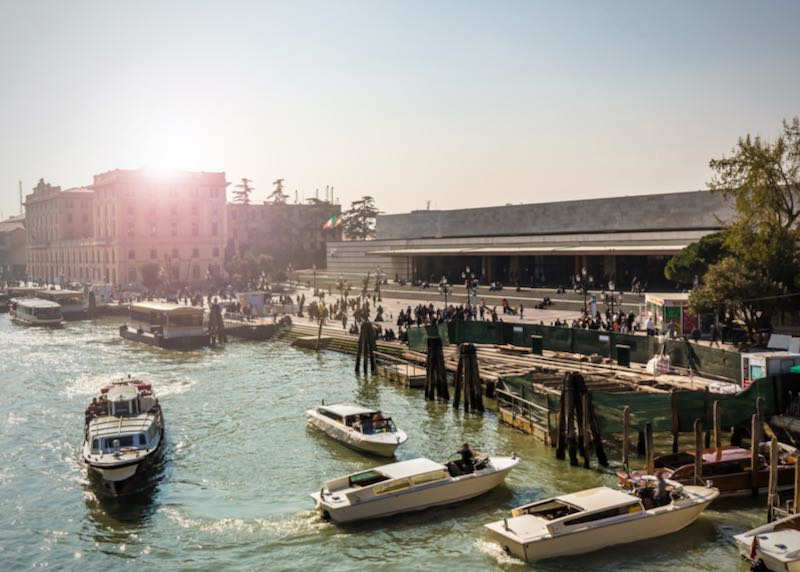
Santa Lucia Railway Station as seen from the Ponte degli Scalzi bridge on the Grand Canal.
Most of the station grounds are actually outdoors in front of the building itself, where tourists gather and say their goodbyes, or queue for water buses and taxis along the Grand Canal. Be aware that there are stairs leading up the main entrance, so if you need a wheelchair or stroller-accessible entrance (or you have a ton of luggage on wheels), there is a ramped side entrance available as well.
There are automated ticket kiosks inside the station, as well as a Biglieterria (ticket office) with actual humans who can walk you through the ticket buying process (be prepared to wait in line for these, though). A tourist information booth is also available, along with a currency exchange if you need more euros before you head to Milan.
Large reader boards show arrivals and departures in the central ticketing area on the main level as well as near the main train “shed” where most of the rail lines depart (there’s another smaller shed as well for regional trains, but for a trip to Milan, you’ll likely be at the centrally located one from which the high-speed trains depart). Overall the station is quite navigable, and so despite the normal train station chaos, it’s relatively easy to make your way around.
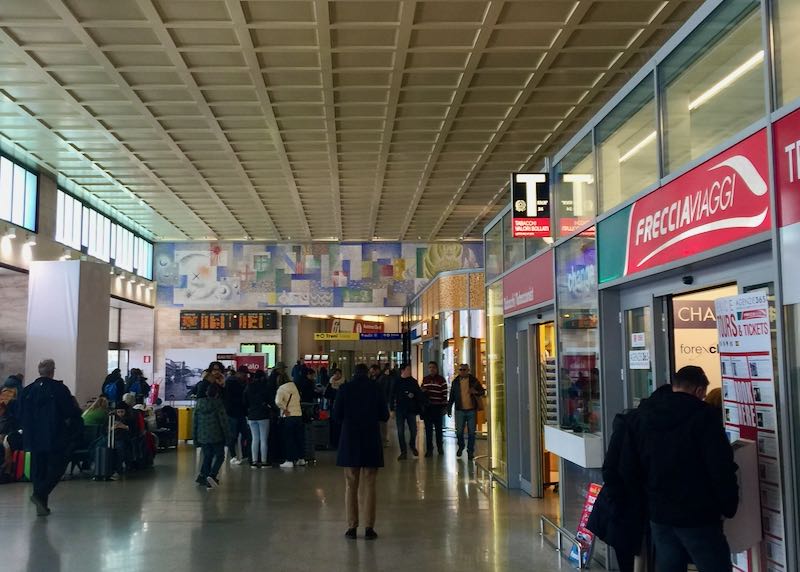
The area around the train station is usually safe, but there may be thieves looking to prey on unaware tourists. Keep an eye (or two) on your bags at all times, and be aware of your surroundings while using the ticket kiosks. Be aware that Venice has another train station as well, Miestre, which serves the mainland area immediately off the coast of the sea. If you are departing from there and not the old city served by Santa Lucia, consult the ItaliaRail website for more information.
How do I get to Santa Lucia (Venice) station?
Venice doesn’t have any cars, or roads for that matter. Your only choices to get to the station are by boat, or on foot. It’s a charming layout for a city, but it also presents the need for some planning.
The vaporetto, or public water taxi, is usually the preferred transportation option. Not only is it inexpensive (usually around a €7.50 flat rate based on time of day and overall demand) but it’s also convenient, with frequent departures from a number of strategic locations along the Grand Canal that winds throughout the center of the old town. You can buy tickets at most of the stops along the way, including advance tickets at several main hubs (like the Rialto Bridge). Or, save time and hassle by buying ahead online. Travel time for the entire route is 45 minutes (or less depending on where you are relative to the station). There are a few different routes that use the canal as well as some that travel around the outside of Venice, though most tourists going to the train station will end up on either the Number 2 route on the Canal or the N route (which is exactly the same except it travels at night and skips the Giardini stop).
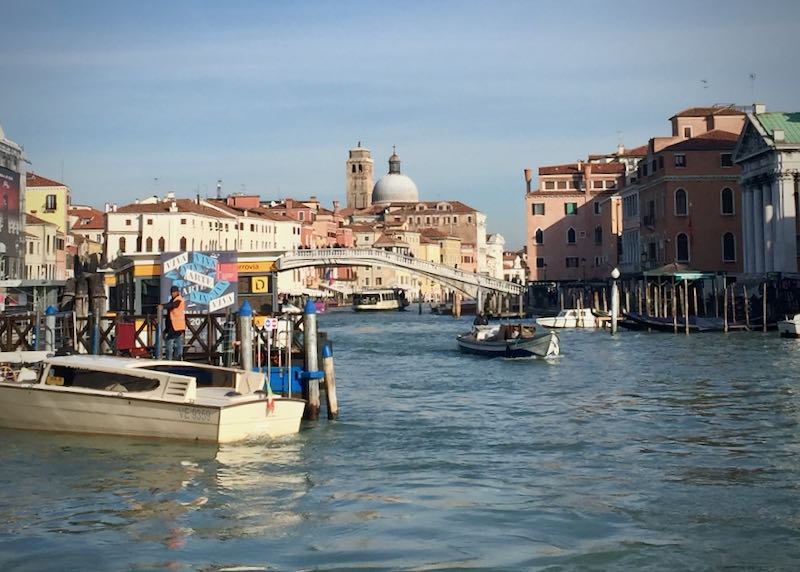
Another option is to take a private water taxi. They are quite a bit more expensive, but if you are part of a group (most private water taxis can seat 6 to 10 people) or interested in sharing a ride with fellow travelers, the cost becomes more reasonable.
Finally, there’s the by-foot option. Many popular locations in Venice, including the Jewish ghetto in the north end and the tangle of alleys in the San Polo area are not too far a walk if you’ve packed light, or are traveling to Milan for only a day or two before returning.
How early do I need to arrive?
While Santa Lucia is fairly small and easy to manage, Venice can be confusing to navigate and there is always a fair amount of confusion at the station. If you already have your ticket, you’re probably safe to plan on arriving 30 minutes before your train leaves to figure out what platform your train will be departing from and whether there are any delays or other complications.
If you do not have a ticket, you will want to get there a bit earlier to give yourself time to understand the ticket buying process (more on that below). The trip to Milan from Venice via Italy’s high-speed rail service takes a little under three hours, so if you have a time in mind for arriving in Milan, you’ll want to plan accordingly.
How to Buy a train ticket from Venice to Milan
Over a hundred trains a day depart from Venice for Milan, and it’s often easy to purchase tickets at the station on the day of your departure. Those traveling during busy travel periods (summer, holidays, and Milan fashion weeks) on a weekday morning when travel tends to be heavier would do well to book online in advance. ItaliaRail.com has a full schedule and easy-to-navigate buying options for both the high-speed Alto Velocità (AV) trains as well as the slower regional trains if you are not in a hurry (or looking to travel a bit less expensively). You might also be able to find cheaper options buying in advance than on the actual day of travel, although that varies depending on demand.
When selecting a train online, be sure to look carefully to make sure the destination is “Milan Centrale,” Milan’s central train station, and that you are leaving from Santa Lucia (or Miestre). Some trains are direct and some stop in other towns on the way, but you can usually tell the difference by the longer travel times. Also note that you can toggle between standard and first-class pricing, and you have to select the box to see the slower/non-direct trains. After purchasing online, you simply show the platform ticket agent the ticket number on your mobile device; ItaliaRail will send this to you in email.
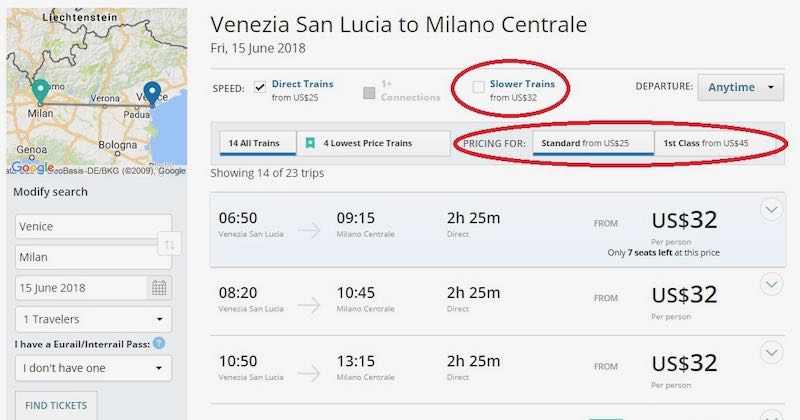
Should you decide to buy your tickets at the station, the self-service machines are reasonably easy to navigate for English speakers. There are different kiosks for different ticketing services, but most of the ones in Santa Lucia are from Trenitalia, offering tickets for the state-run Frecciarossa lines. There are also several kiosks for Italo, a privately-run transportation line with its own separate ticketing service. Both services and kiosk types are pretty much the same. Again, you will want to ensure that your selected route leaves from Santa Lucia station in Venice and arrives at Milan Centrale station.
The machine will then give you a paper ticket you can show the ticket agent when you step through the gate on the way to the train platform.
If you get off track (so to speak) while using the machines and need help, there are sometimes a few service agents wearing Trenitalia (or Italo) uniforms who can assist, although they will likely only be around during peak travel times. You can also go to one of the ticket buying desks and buy your ticket from a human (be prepared for a line). If someone approaches you while you’re buying a ticket offering to “help” you and they are NOT wearing a uniform, say “no grazie” and ignore them.
There are machines around the station asking you to “validate” your ticket, but you only need to validate for the regional trains. If you are on Italo or the Trenitalia/Frecciarossa lines and you purchased your ticket from either the kiosks or in advance online, your ticket is already valid so you don’t need to bother.
A few other important notes:
- Seats on the trains are reserved, and you will have the option to select your seat when you buy your ticket. However, look closely at your ticket after you buy it and double-check the train car and seat number. It’s very possible your seat number will be different than the one you requested; the system doesn’t update in real time, so the seat you are assigned may NOT have been the one you picked (although it should be close by).
- Ticket kiosks only let you use cards that have a PIN number. This means that in many cases you cannot use your credit card. You’ll have to use a debit card, or a credit card that has a PIN attached to it, in order to purchase your ticket.
- On Trenitalia, children under four years of age travel for free with no ticket required, while children under 15 are allowed to travel at a reduced rate.
How do I figure out what platform my train is on?
After you buy your ticket, you’ll see the train number, departure time, and destination listed on the front. At several points throughout the station, there are large reader boards which show scheduled departures, arrivals and points of origin, train platform numbers, and updates on delays. Match the information on your ticket with the numbers on the board, and proceed accordingly.
Using this up-to-the-minute (usually) information, you’ll be able to figure out all you need to know about your train, including the platform from which your train will depart. The platforms are numbered and displayed in the railway departure area by each set of tracks.
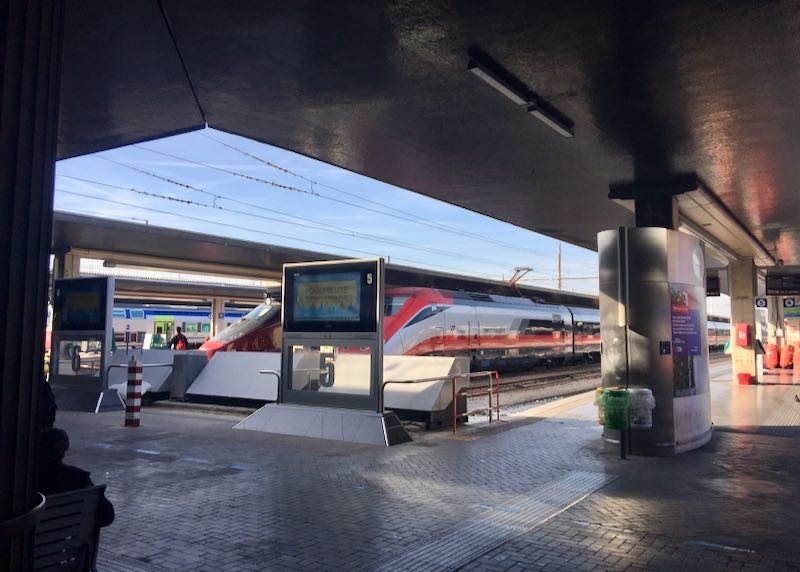
Platform 5. Overhead screens display train information.
Once you get to your platform, there is another sign there with information on your train; this should match the information on the reader boards elsewhere in the station, but may have slightly more updated information.
What services and food options are available at the station?
Santa Lucia, while on the small side compared to other stations in larger cities, still offers a number of options for travelers in need of a bite or looking to do some shopping. There are around 30 stores inside the station, mostly offering fashionable clothes and of course souvenirs for those who neglected to stock up during their stay.
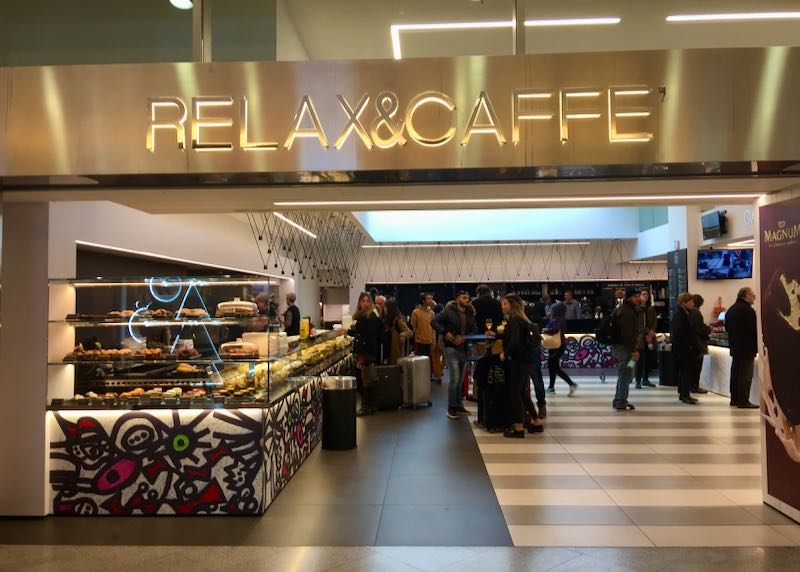
One of the many small eateries within Santa Lucia railway station.
As for food, there are a dozen or so options available, which mostly offer small sandwiches and pizzas. Those looking for something more substantial should give themselves a little more time if possible and take advantage of the many eateries within a 10-minute stroll of the front entrance to the station.
The Santa Lucia website has more information on what’s around and where to find it; be sure to check there for more information.
About Santorini Dave